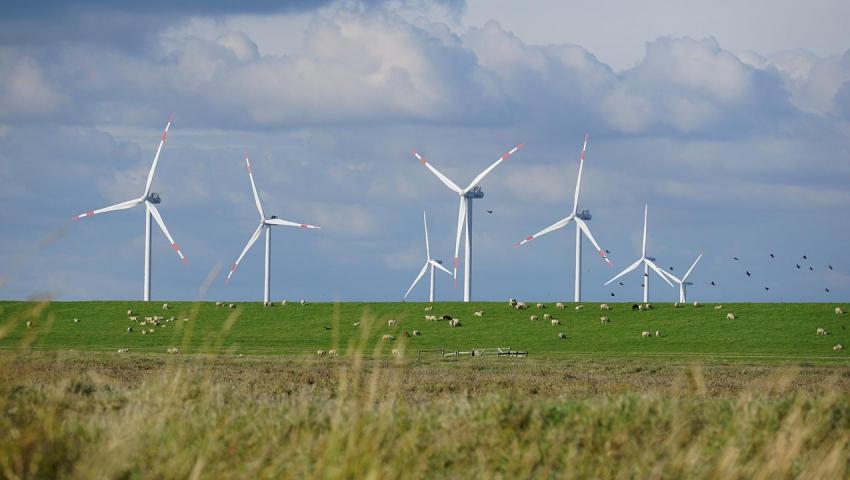Risks for banks in the Green transition - by 2024 they must present the first reports on their green assets
The financial sector and especially the banks are assigned a key role in the success of the entire green transition through restrictions, new regulations and through the financing they provide

Raya Lecheva
By 2024, banks must present the first reports on their green assets. This became clear from a study by the Institute for Economic Research at the BAS with the participation of Prof. Dr. Daniela Bobeva, Prof. Virginia Zhelyazkova, Ph.D., Prof. Dr. Svetlana Alexandrova, Ch. assistant, Dr. Yana Palova, which 3eNews has. For the first time, a summary of the experience of the banks in the first stage of the Green transition, carried out without fiscal support and a Recovery Plan, is made.
Data are currently scarce and little comparability can be made. Annual reports for 2021 of the banks and the non-financial statement are used. The object of the analysis are 18 banks licensed in Bulgaria. The analysis does not include the branches of banks, as well as foreign banks that, under the unified passport, carry out banking activities on the territory of the country. Information on the product mix and financing of green projects was collected from the banks' websites.
According to the research, there is a substitution of investments in traditional carbon-intensive sectors with those in low-carbon or neutral ones. It seems that not the market, but the regulatory authorities decide what and how to finance. The green transition of banks is highly administered, new regulations, taxes, restrictions, labeling of activities, etc. are emerging.
Green is not risk-free. In fact, we are seeing the addition of new risks and banking is becoming even riskier.
One very important question is whether to raise capital requirements.
Whether and how much to change capital requirements for the purposes of reducing exposures to carbon-intensive companies - may conflict with the standard approach to banks' risks. If carbon-intensive companies are profitable, banks would lose good customers if they refused to finance them, but they could also decide to finance them despite the high capital requirements and so there would be no effect on the emissions themselves.
There is also a risk of creating excessively low capital requirements for green exposures, which in turn will worsen the risk profile of banks. Green investments do not always have a sufficiently high return. In general, green investments are low-return and long-term in nature. These regulations should motivate banks to finance carbon-intensive firms that have, however, developed their own emission reduction and circular economy plans.
In some countries, national regulations regarding environmental and climate change risks were introduced, while others, such as Bulgaria, awaited the establishment of the supranational European framework.
This framework has emerged and this is the taxonomy regulation.
The risks for the banking sector and positioning "green risks" in the general framework of risk assessment.
The assessment of each exposure from the point of view of environmental risks is already set in a framework that requires considerable expertise and detailed information from the borrowers. In-depth analytical work and prepared specialists are required.
According to the Regulation, banks assess individual portfolio exposures exposed to chronic and acute climate-related risks, distributed by economic activity sectors (NACE classification) and by geographic location of the counterparty's activity or the collateral. In order to make the assessment, banks must use special portals and databases to identify geographic areas that are susceptible to specific climate-related risks
Sample data and sources are not always one-way. Assessing the “vulnerability” of physical phenomena related to climate change is challenging. It is not certain whether banks value in the same way and what is meant by "chronic phenomena" related to climate change, including hazards related to gradual changes in weather and climate conditions and with possible impacts on economic output and productivity.
According to experts, we need to distinguish environmental from climatic risks, physical risks from risks of the transition itself, distinguishing levels of risk assessment, positioning "green risks" in the general framework of risk assessment.
The risks of the transition should be positioned in the general structure of risks, where climate risks are only one type of specific risks that have a longer-term nature. The long-term nature is one of the reasons why they are more difficult to measure and manage. The main problem is related to measurement and forecasting and more specifically the lack of a consistent and reliable historical data series, analysts believe. Lack of a clear analysis of the macroeconomic effects.
A significant risk, which is to some extent realized, is that financing institutions will not limit or even stop financing carbon-intensive companies, as this will affect both their balance sheets and the real economy. Some climate risks, such as extreme weather and other physical risks, are not specific to individual customers, but affect clean and carbon-intensive activities equally.
Other climate risks are likely to disproportionately affect carbon-intensive activities, for example transition risks arising from changes in consumer behavior or future environmental regulations. Technologies in many areas are not yet ready for a rapid transition to a decarbonized economy. It is possible to repeat the experience of inflating asset bubbles for which investors expect too optimistic results.
How are banks and their customers affected?
From 2022 onwards, banks must classify all their loans and other exposures, applying the taxonomy to their customers' business, and in practice build their product policy, risk management and reporting around the taxonomy's requirements.
According to the decision of the European Commission, by 2024, banks must fill in the first set of detailed reporting forms for the green asset ratio (Green Asset Ratio, GAR).
The GAR ratio is considered a leading indicator by the European Banking Authority. GAR will be the ratio of the bank's loans and securities meeting the taxonomy to the bank's remaining assets.
